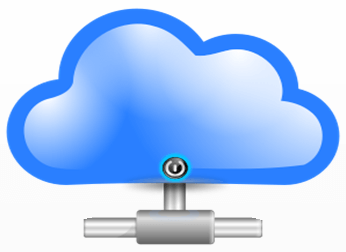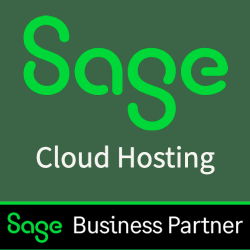With the recent announcement that Sage X3 is now available in the cloud, it seems that technology is really changing the way that business gets done. Here’s a look at why companies are moving to the cloud to build their business without the up-front cost of technology infrastructure and IT staff.
So, Why the Cloud?
Companies that adopt cloud-based technology do so for a variety of reasons. But here are a few of the most common.
Lower Up-Front Cost - because many cloud solutions are delivered through the software-as-a-service (SaaS) model, you typically pay only for the use of the software rather than the much larger cash outlay required to finance a purchase.
In addition because cloud applications often run on the vendor’s technology infrastructure, there’s no need to purchase new servers or upgrade your in-house systems to accommodate the requirements of modern software.
Fewer IT Resources - for companies that don’t have in-house IT support staff, cloud solutions are appealing because they don’t come with the heavy economic burden of hiring employees to update, support, and maintain the technology that these solutions run on. The vendor often handles it.
Technology Access - in large part because of lower up-front costs and IT support requirements, the cloud provides access to applications that, for some companies, were previously cost-prohibitive. In turn, small and mid-sized companies get access to more powerful technology that helps them grow faster and leverage the efficiency “big business” technology.
Web Access & Agility - because the cloud is inherently web-based, you have more options for accessing cloud applications using any desktop, laptop, mobile device, or tablet. There’s no need to set up and maintain any special web servers or remote connection technology. When you can access your business systems anywhere and anytime, you create an organization that’s much more agile.
Lower Up-Front Cost - because many cloud solutions are delivered through the software-as-a-service (SaaS) model, you typically pay only for the use of the software rather than the much larger cash outlay required to finance a purchase.
In addition because cloud applications often run on the vendor’s technology infrastructure, there’s no need to purchase new servers or upgrade your in-house systems to accommodate the requirements of modern software.
Fewer IT Resources - for companies that don’t have in-house IT support staff, cloud solutions are appealing because they don’t come with the heavy economic burden of hiring employees to update, support, and maintain the technology that these solutions run on. The vendor often handles it.
Technology Access - in large part because of lower up-front costs and IT support requirements, the cloud provides access to applications that, for some companies, were previously cost-prohibitive. In turn, small and mid-sized companies get access to more powerful technology that helps them grow faster and leverage the efficiency “big business” technology.
Web Access & Agility - because the cloud is inherently web-based, you have more options for accessing cloud applications using any desktop, laptop, mobile device, or tablet. There’s no need to set up and maintain any special web servers or remote connection technology. When you can access your business systems anywhere and anytime, you create an organization that’s much more agile.
Cloud Vs. Traditional On-Premises
While the cloud is an appealing option for many companies, others find that the traditional on-premises software model is a better fit. For starters, some businesses prefer the control of having the software and data maintained on their own servers. In addition if you need to customize the software or integrate with other systems, you typically have much more freedom and flexibility with on-premises software that own and maintain in-house.
The Hybrid Approach
Adopting the cloud or remaining on-premises is not an all or nothing proposition. In fact, Sage firmly believes in “Freedom of Choice” which is why Sage X3 is available as a both a cloud solution and on-premises installation.
What’s more, as cloud technology becomes more mature and some of the hype blows over, many companies are finding that the best option is a hybrid approach. Running some of your applications in the cloud while other more critical systems remain in your server room down the hall.
The good new about the cloud is you now have even more choice when it comes to leveraging technology.
What’s more, as cloud technology becomes more mature and some of the hype blows over, many companies are finding that the best option is a hybrid approach. Running some of your applications in the cloud while other more critical systems remain in your server room down the hall.
The good new about the cloud is you now have even more choice when it comes to leveraging technology.
Got Questions About Sage X3?
Get in touch with your Sage Authorized about running Sage X3 on-premises or in the cloud.
If you're not already working with an authorized partner, click below to find a Sage X3 reseller in your neck of the woods.
If you're not already working with an authorized partner, click below to find a Sage X3 reseller in your neck of the woods.


